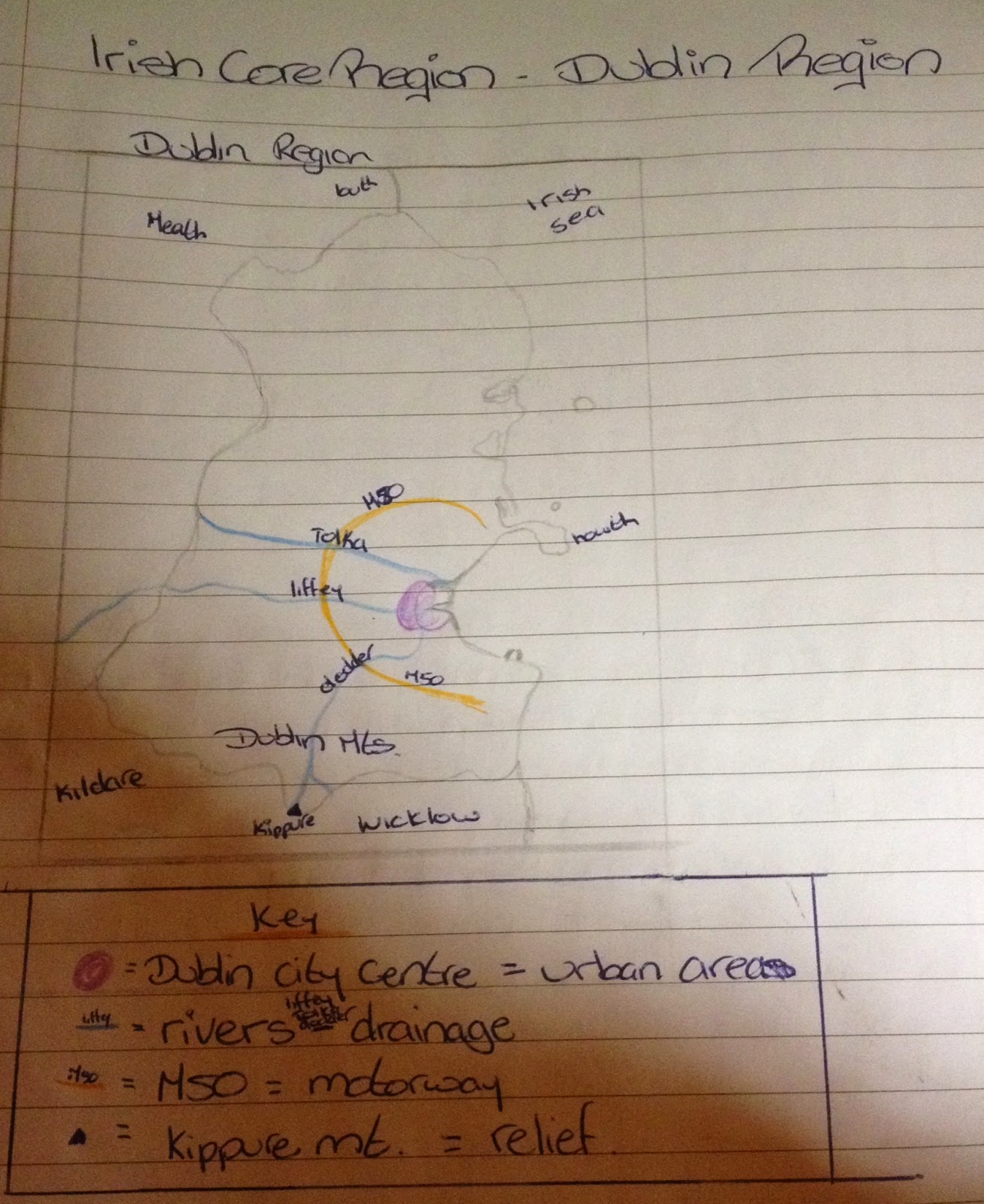Physical Geography
Topography:
- Mainly flat or undulating
- very flat coast line to the north, rises to the south
- rises in the south to form the Dublin Mountains
- region is well drained by the west-to-east flowing Liffey
- Other rivers include the Tolka and the Dodder
- Brown Earths dominate the region. This fertile soils was laid down over thousands of years due to the decay of deciduous leaves
- Alluvial soils have been laid down close to the rivers such as the Liffey and Tolka - very fertile
- There are poorly formed podzol and peaty soils found to the south of the region where there is higher rainfall and cooler temperatures due to alltitude
- Precipitation: lowlands 800mm pa, uplands 1600mm pa
- temperature: (mild due to altitude and coastal position) winter - 5-6 degrees, summer - 16 degrees. The winter in the Dublin Mountains would be slightly more severe due to altitude
- Sunshine: 4 hours per day - higher than most of the country
- growth rate - 270 days (temperature above 6 degrees) to the North of the country.
The combination of the above physical factors leads to the development of specific primary, secondary and tertiary economic activities.
Primary Economic Activities
As the Dublin region is a core region few people are involved in this economic sector. There is little mining and some forestry. The fishing industry is struggling and agriculture is under threat from urban sprawl.Agriculture
Although few people are employed in agriculture in the Dublin Region, it is still a very important primary economic activity. Two key factors that have affected the development of agriculture are the region's landscape and climate.The first factor that has affected agriculture in the Dublin region is landscape. The North of the region has a flat or undulating topography. Brown earths dominate the region which are deep and fertile. The good soil and flat land is good for tillage farming. AS a result of this there is a lot of wheat and barley grown. There is also a lot of market gardening, with crops such as potatoes, carrots, onions and cabbages.
The north of the region also has some dairy farming, producing milk as well as cheese, yogurt and other dairy products. The south of the region has the Dublin mountains. As such it is bad for tillage farming. Pasteurial farming of sheep and some dry beef stock is the main agricultural activity in the south of the region.
The second factor that has influenced agriculture in the Dublin region is climate. The Dublin region has an average temperature of 5-6 degrees in winter and 16 degrees in summer. Becasue of its coastal location, it does not get very cold or very hot. This makes it ideal for crop growing as soil needs to be 4 degrees for seeds to grow. AS such there is a lot of tillage farming in the region. The winter temperatures in the Dublin mountains however are slightly more severe than the lowlands. There is approximately 800mm of rain each year in the lowlands of the region. This is perfect for tillage farming. The uplands have about 1600mm each year. This is a bit much for crop growth so the uplands are mainly used for pasteurial farming.
Fishing
The fishing industry in the Dublin region has been in serious decline for the last number of years. Many fish species have been fished to almost exhaustion in the Irish sea. This is being done by both Irish fishermen and foreign boats from country's such as Britain and Spain. Strict quotas have been put in place that limit the amount of fish that can be caught each year in the Irish Sea. Many fishermen have reached these quotas in just 3-4 short months and many are finding that they cannot make a tear-round living from fishing alone. Many fishermen are forced to find part time employment on land or are forced out of the industry altogether.The two main fishing ports in the region, Howth and Skerries, account for only 3% of Ireland's yearly catch. Fishing in the Dublin region, as an industry, probably has very little future, especially since there is little opportunity for aquaculture. Unlike the West of Ireland, the Dublin region has few suitable locations for fish farms due to busy shipping lanes and a less indented coastline.
If question says ACTIVITY use agriculture, if it says ACTIVITIES shorten agriculture and add in fishing.
.jpeg)
